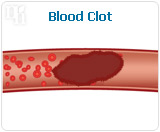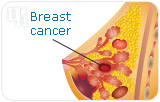
When the Women's Health Initiative (WHI) was created in 1991, it sets out to find solutions to common problems that females face as they age. With the looming threats of heart disease, strokes, bone density loss, and cancer, the organization was driven by the possibility of saving numerous lives as they searched for a way to prevent these ailments. In the case of hormone replacement therapy (HRT), the results have been mixed.
What Is the Women's Health Initiative?
The WHI is a component of the much larger United States National Institute of Health. One of the WHI's purposes throughout the 1990s and early 2000s was to conduct clinical trials and observational studies of possible solutions to postmenopausal symptoms and illnesses.
How Did WHI Change Treatments for Postmenopausal Women?
The breakthrough studies of the WHI hinge mainly on one long-term study of the effects of hormone replacement in postmenopausal women. Specifically, the goal was to determine if replacing hormones that women no longer produced after menopause could lower the number of instances of heart disease, bone fractures, breast cancer, and colorectal cancer.
The study, which began in 1993, gathered a randomized sample of the female population and broke them into three groups: women who had not undergone a hysterectomy previously took estrogen plus progestin therapy, women who no longer had a uterus took estrogen-only therapy, and the last group was used as the control and took only a placebo.
What Did the WHI Discover about HRT?
Studies over the next decade revealed that (HRT) did remedy some major postmenopausal threats in women. Hipbone fractures were reduced by about one-third in both groups that took hormones. Those women who took estrogen plus progestin also exhibited a decreased number of cases of colorectal cancer.

However, some very serious health threats crept up in the place of bone loss. In 2002, the estrogen and progestin group showed significant increases in heart disease, stroke, blood clot, and breast cancer. Less than two years later, the women who had followed a regimen of estrogen-only exhibited more cases of blood-clotting and consequent strokes. The study was ended as a result of these findings.
How Did the WHI Affect HRT?
In 2000, before the study was interpreted, HRT treatments rose past 60 million and then fell following the release of information from the WHI. Although the HRT study was officially ended between 2002 and 2004, the initiative kept track of the women in the study until 2010.
Although the study is not without its skeptics, its most important impact was initiating the debate about the safety of HRT. Because of the information released by the WHI, more women are urging each other to educate themselves about the medicines that they choose to take to combat menopause symptoms.
More Information about HRT
In addition to an increased risk of blood clots, stroke, and cancer, HRT may also cause headaches, nausea, and cramping. Click on the following link to learn more about multiple side effect of HRT.


